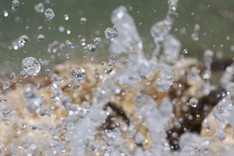Technologies and Applications
Hydropower
Hydropower has been used for generating electricity ever since the end of the nineteenth century, and is now used in 159 countries around the world.
Today, it is the most widely used renewable energy source for generating electricity worldwide.
The worldwide installed capacity of hydropower amounted to 1.2 TW at the end of 2014 and accounted for approximately 16.2 % of the world’s electricity generation in 2012.
Advantages of hydropower:
- Storable and flexible in use
- Base load capability and grid stabilisation(able to balance fluctuations in solar and wind energy by virtue of its flexibility and constant availability)
- Can promote regions which are not yet economically developed and connected to the grid.
- Can provide decentralised energy.
Power categories
The power of a hydropower plant is generally dependent upon the water flow rate and the drop height of the system, and on the efficiency of the water turbine, gear mechanism, generator and transformer. A distinction is made between large hydropower plants and small hydropower plants depending on the power category.
Small hydropower (SHP) is defined as the use of hydraulic energy by local, small hydropower plants that do not generally involve any significant environmental impact. Most of the plants are on small rivers and do not have a reservoir but water basins of different size and construction. There is, however, no international consensus on the definition of small hydropower. The classification of small hydropower systems, which has become generally accepted, is as follows:
- Micro: 1 kW – 100 kW
- Mini: 100 kW – 1,000 kW
- Small: 1,000 kW – 10,000 kW.
Plants with a capacity of up to 1 MW are therefore considered to be small hydropower plants in Germany. In China, small hydropower can refer to capacities of up to 25 MW, in India, up to 15 MW, and in Sweden to plants of up to 1.5 MW. In Europe, a total capacity of up to 10 MW, following the European Small Hydropower Association (ESHA), has become the generally recognised upper limit for small hydropower.
There are various types of hydropower plants:
Run-of-the-river power plants / river power plants
Run-of-the-river/river power plants are the most common type worldwide. They use the flow energy of a river, and are normally used to cover the base load. Their capacity is determined mostly by the gradient and the water level. Some run-of-the-river power plants can also dam water at times of low energy demand in order to use it as a reserve when demand is higher. The so-called diversion hydropower plant is a special type of run-of-the-river plant. The water is dammed in a weir and redirected onto the turbines by means of a separate feeder channel. In the case of a standard run-of-the-river power plant, there is only a slight difference in the height between the upper and lower water levels, but a diversion hydropower plant exploits the greater height difference created by the diversion.
Run-of-the-river power plants:
- are the most common type worldwide
- use a river’s flow energy and normally cover the basic load
- capacity is determined mostly by the gradient and the water level
- can also store water at times of low energy demand in order to use it as a reserve when demand is higher.
Floating small hydropower plants
The floating hydropower plant is installed within a power buoy, which efficiently exploits the kinetic energy of the water current due its position directly underneath the water surface and its automatic alignment. Additionally, the slow rotation of the turbine protects fish that swim through the buoy.
Use of tidal and marine energy
The kinetic energy of waves, tidal range and tidal flow can be used to generate electricity. Although electricity generation from the natural flow of the oceans is still in its infancy, it has the future potential to make a substantial contribution to the worldwide energy supply. One advantage of utilising marine energy is the base load capability of the generated electricity due to predictable tides, which has a balancing effect on the renewable energy mix. While tidal range power plants are already technically mature, other technologies, such as so-called wave power plants, are still in the development stage. In countries such as Canada, the USA, Russia, Australia or the UK that are surrounded by oceans with high current and/or high tides, there is considerable potential for using tidal and marine energy. Among the challenges are cost reduction, integration into the electricity grid, complex mechanical demands, corrosion and plant maintenance.
Storage power plants
Storage power plants store the water in a natural or artificial lake and feed it via pipelines into a lower-lying power plant. Such plants can operate independently of natural water inflow, and are particularly suited to balancing fluctuations in regional and national electricity generation and consumption. They are used both to cover the electrical base load and for peak load operation.
Pumped storage power plants
Pumped storage power plants use two reservoirs to store water, with the greatest possible height difference between the lower and upper reservoir, which holds water available for generating electricity during peak periods. During off-peak periods (e.g. at night or when there is a large amount of solar or wind energy in the grid), water is pumped from the lower to the upper reservoir. Pelton turbines are used to drive the generator.
Turbines
The type of turbine used depends on the rate of flow and head height (pressure) of the water.
Francis turbine: The Francis turbine is one of the oldest types of conventional turbine, used primarily in small hydropower plants. It is suitable for low drop heights and medium flow rates.
Hydrodynamic screws: Hydrodynamic screws work on the principle of the Archimedes’ screw. They are primarily used for small drop heights and low capacities.
Kaplan and bulb turbines: Kaplan and bulb turbines are common types of turbine for run-of-the-river power plants with small drop heights of 6 to 15 m and high volume flows. They are suitable for fluctuating water volumes.
Pelton turbine: The so-called Pelton turbine, a free-stream turbine, is used for high drop heights from 100 m to 1000 m and/or low water volumes.
Cross flow turbines: Cross flow turbines are used for low drop heights and low water volumes. They generally have a small capacity.
MICRO TURBINES AND MICRO DAMS
MICRO TURBINES: system micro turbines that produce electricity at low cost and high performance.
Installation: It is possible install the system in rivers, small rivers, lakes, ponds and DAMS that already exist.
DAMS: For the DAMS that already exist, the installing our technology is independent of the existing technology, it is not necessary to change anything in the DAMS.
MICRO DAMS: With our technology it is possible to make the small dams with micro turbines.
Installation: It is possible install the system in small rivers, lakes, ponds.



